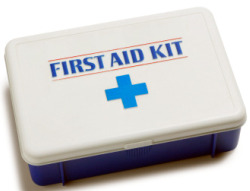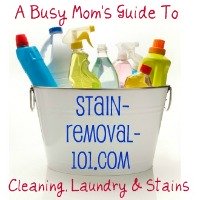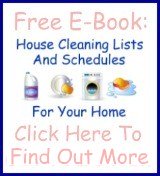
|
First Aid Kit Checklist For Families With ChildrenEvery family needs to check out their first aid kit checklist periodically to make sure they have all necessary first aid supplies on hand because accident or illness will strike.  Photo © Istockphoto.com/DNY59 Notice I didn't say "if" because accidents and illness, especially for children, are just a part of life. You can, of course, buy a first aid kit similar to the one pictured above. In fact, if you are in a hurry this can be a quick and easy way to get something with the basics in it into your house. However, if you want you can also create your own first aid kit, or use the checklist below to make sure the one you purchase has all the stuff you need in it. In addition, the first aid kit checklist below can help you make sure you get everything needed to suit your family's unique needs. Recommended First Aid Kits You Can PurchaseHere are some recommended first aid kits you can buy, which contain the major stuff your family will need. Please note that none of these kits will have everything you need, so check out the first aid kit checklist below to make sure you purchase separately, or gather up from various parts of your home, anything else you will need to complete your kit. How To Create A First Aid Kit For Your FamilyYou can put first aid kit contents in basically any type of storage container with a lid, but make sure it is placed outside the reach of small children so they do not get into any medicines or supplies contained in it. In my family we actually put all our first aid kit contents in a large plastic container to keep everything together, and I have it placed on a high shelf in my closet where the children cannot reach it. Also, note that your first aid kit, if it contains medicines, should be stored in a cool, dry area. Therefore, even though we think of medicine cabinets being in the bathroom this is actually not a good place to store your medications because bathrooms get hot and steamy. Check And Update The Supplies In Your First Aid Kit Approximately Every Six MonthsKeep a first aid kit checklist taped to the lid of the container holding your first aid supplies, or place the checklist in the container itself, so you can easily see what should be in the kit at all times. (Below you can get a free printable version of this first aid kit checklist that you can use if you would like.) Approximately every six months check the contents of your first aid kit compared to the checklist, and also review the supplies to see what has expired and replace any that have expired or been used up. First Aid Kit Checklist Papers
I suggest either the The American Red Cross First Aid and Safety Handbook, or the American Medical Association Handbook of First Aid and Emergency Care. Supplies For Minor Scrapes And Cuts*
* I suggest you also have additional of these supplies in the kitchen or central bathroom in your home, and also some in your purse, because boo boos happen all the time with kids. Medical Ointments
Medical Supplies
Miscellaneous other supplies
* Including rectal thermometer for infants, and oral, ear or forehead thermometers for older children and adults, and be sure to also have the items necessary to cleanse the thermometer after use.
* Note I am talking about ones that are calibrated to measure liquid medicine precisely, not ones for baking.
These last two are especially useful if you plan to make your first aid kit part of your emergency preparedness kit, which I suggest. Medications*
* You need to have, at least for children, both infant and older children's varieties of fever reducers, depending on the age of your children, and you should have both acetaminophen and ibuprofen for those especially bad fevers where you are instructed by your doctor to alternate medications, and you may also want to have these also in suppositories if your child vomits medications a lot when ill.
* For all of these medications, have the appropriate ones in both adult and children's versions. What Should I Have In My House In Case Of Accidental Poisoning?It is no longer recommended to keep syrup of ipecac in your home to induce vomiting, according to the American Academy of Pediatrics In addition, the American Academy of Pediatrics does not recommend keeping activated-charcoal solution in your first aid kit. Instead, call the Poison Control Center immediately! The Poison Help hotline number is 1-800-222-1222 It does not have to be expensive or take a lot of time to stock your first aid kit if you just buy one or two items at a time every couple of shopping trips. Further, this first aid kit checklist is just a guide, and I am not a medical doctor. Check with your physician if you have any questions or need further clarification. Finally, each family is unique and therefore your first aid kit checklist should be tailored to fit your needs and activities, including allergies, prescription medications, health conditions, and activities and hobbies that family members engage in. Wish this checklist was printable? Well, it is! Click here to get this as a printable checklist (opens as a PDF) so you don't even have to write out your own. You can just put a copy directly in your household notebook and another in your first aid kit so you can periodically make sure you have all the right supplies! Related Pages You May EnjoyResources For Household Notebook - Printables And Checklists Health And Safety Tips For Your Family And Home Go From First Aid Kit Checklist To Home Page |
Let's Stay Connected!Visit My Other WebsitesStain-Removal-101.com
Home-Storage-Solutions-101.com
|
|

|
||
|
Return To Top | Home Page | Blog | Newsletter | Contact Me | About Me | Sitemap | Privacy Policy | Disclaimer | Disclosure | ||
|
Copyright © 2008 - 2025 - Flanery Companies, LLC - All Rights Reserved
| ||
Share Your Comments, Thoughts & Ideas